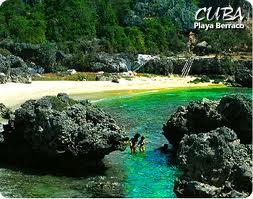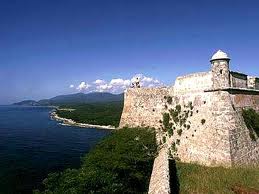|

With a population of over half a million, the country's second largest city after Havana is Santiago de Cuba. This place is remarkable for many reasons, not least its cultural richness and diversity: besides Spanish and African roots, many of Santiago´s citizens originate from French immigrants.
The city was founded early on in the 16th century as the first European colonists arrived. Its beautiful bayside location, its mountain backdrop, and the richness in natural resources made Santiago de Cuba an ideal place for settlers.
When travelling to Cuba, most people who arrive at Santiago de Cuba do so via Antonio Maceo International Airport. However, the city also has a cruise ship terminal which sees ships visit as they sail their way around the Caribbean and Central America.

Thanks to the considerable socioeconomic and cultural development of the provincial capital, Santiago de Cuba today has first-class hotels, not only in the city but also at its beaches and well-conserved natural settings.
Its hotel facilities provide a sound base for large-scale tourism, and offer a wide range of tourist activities to choose from. It earned Santiago de Cuba the Golden Apple Award presented by the International Federation of Travel Writers and Journalists (FIJET).
Nowadays, you can explore the pretty parks and winding streets of flower filled balconies, and with architectural styles ranging from baroque to neoclassical. Soak up the soul of the city: Santiago de Cuba contains some places that are unique in the world!

For example, there is the fortress of San Pedro de la Roca del Morro and the ruins of French coffee plantations in the mountains east of the city both of which UNESCO has declared to be a part of world cultural heritage.
A visit to Tivoli, a neighbourhood of French-Haitian origins, is a must.
Other noteworthy sites include the Troubadours' House; the Rum Museum; the Santa Ifigenia Cementery where Jose Marti, Cuba's national hero, is burried and the Basilica of El Cobre Sanctuary of Our Lady of Charity, the patron saint of Cuba. There is much more to be seen here: museums, theatres and last but not least the city´s many live music venues.
More so than Havana, Santiago is the city of music. Nearly all Cuban music styles originate from this city.
A yearly event that you, if you get the chance, should not miss out on, is the Cuban Carnival. Oddly enough celebrated in July, Santiago´s Carnival is the most spectacular in the country (just as Santiago´s rum is the most popular!).
Santiago de Cuba´s province borders in the north with Holguín, to the west with Granma, to the south with the Caribbean Sea, and to the east with Guantánamo.
|